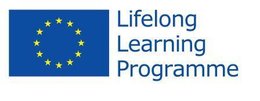Interviews with the Work Packages Leaders of WP4; successful practice and quality criteria
Edited Interview from the All Partner Meeting in Lausanne 22.5.2014 - conducted by Peter Stear & Julia Cooper. To mark the successful progress in WP4 we thought we should devote some space to comments by the three current Work Packages Leaders, Thomas Vogel, Kevin Haines and Stacey Marie Cozart. We asked the WP4 team for their thoughts on the project, that is, how they see the project developing – particularly the development of principles for quality in the Multilingual and Multicultural Learning Space.
2014.06.25 |
TV: Let me first say how grateful I am to have been given the opportunity to work in such an efficient and like-minded team. Now the research, where did it come from? We started by looking at the different examples. It was a bottom-up process where we started by looking at the examples.
KH: The principles came from the examples and the examples from the challenges.
TV: We needed to make sure that there was a very clear continuity...
KH: ...that each WP builds on the previous WP. What we achieved here is that everyone will go away with the feeling that they know what these five principles are. There wasn’t that much disagreement or difficulty in understanding the principles as such, with the possible exception of the fifth principle, to do with broadening the knowledge base of learners. We found it quite difficult to describe this in a way that would make it transparent to everybody. There were not that many examples of it and we thought that this would be an area that would need attention.
TV: But it was obvious that this would be a discussion point, because the people who are here are not from academic subjects, are usually language and ‘interculture’ people.
KH: I think that [the fifth principle] becomes clarified if you step back and look at it from the perspective of the content teachers and students. It’s to do with the experience of getting outside the comfort zone, not linguistically, but culturally in the sense of discipline cultures and academic cultures.
PS: Did you have a sense that there were clear cultural differences across Europe?
KH: When you get students into groups that are actually small enough for them to interact, then these kinds of cultural issues become less prominent.
TV: The larger the group, the more problematic it is to integrate and integration is one of the principles. One issue that has come out of the examples was that there were hardly any policy examples. That is what has to be addressed in the next step, in the recommendations. The general, the generic examples should address the policy level. This will hopefully happen in Braga with people from the outside.
KH: The outer circle is really important. We didn’t get enough reactions to the blog and we have to be more proactive.
TV: We need to use language meaningful to people outside the group.
KH: Find ways of using everyday, non-subject-specific language...
TV: ...not get lost in the jargon of the trade, for example pluri-lingual, multi-lingual, trans-languaging...
KH: ...or the language of co-construction or scaffolding. If you talk like this to rectors, they won’t know what you’re talking about. We have to get the message to a whole range of stakeholders.
TV: I think we’re moving in the right direction.
KH: In terms of positives, I think it’s really becoming a network.
PS: How is the network taking shape or changing?
KH: I think there are fundamental shared understandings. When I presented the five principles, I tried to show that they couldn’t work in isolation of each other. They represent some kind of process, in fact. With number five, most people haven’t got there yet. They’re still trying to establish diversity. In some of our faculties, where 90% of the students are Dutch, you’ve got some way to go. That doesn’t mean you can’t be aware of where you’d like to be.
SC: The whole idea of internationalising the curriculum is fairly new, so it’s obvious there weren’t many examples.
PS: As we move southwards towards Portugal, I had the impression that people in Holland and Scandinavia were ahead of the game, at least at the beginning.
KH: It’s not an even picture. Not even at my university. Some faculties are far ahead, others just starting, in the first year of EMI.
SC: It isn’t an even picture. There are more and more programmes in English, but not many people have thought about what that means in the classroom. Individual lecturers are figuring it out. A lot of lecturers in my faculty have found some fantastic practices that work well in the classroom. So, they’re doing them at a local level, but at the institutional level there hasn’t been a lot of work.
PS: In the examples, we had a lot of ad hoc solutions.
SC: Exactly.
PS: In the next meeting with the institutional representatives, what kind of ideas might emerge? As well as communicating in a certain way, what do we have to offer them?
SC: There’ll be some specific examples in our report: strategies, practices in the classroom.
PS: So it’s about making them aware about strategies from the bottom up. What would you expect them to deliver on?
SC: Hard for me to speak for all of Europe. I don’t even know if I can speak for my institution. There’s definitely an interest in internationalising the classroom, but whether there’s funding behind that I don’t know. There’s an interest in strategies of internationalization at home being about more than just teaching in English or students numbers: actually the quality issue.
The IntlUni project consists of 8 work packages in total – you find them all listed with descriptions together with the WP leaders on our IntlUni website.




